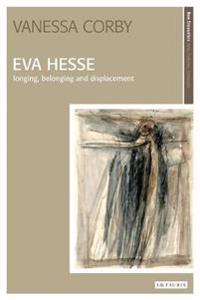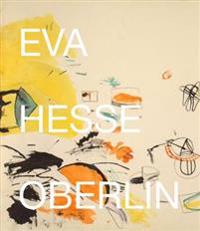Eva Hesse (Inbunden)
avYve-Alain Bois, Eva Hesse, Fred Wasserman
ISBN: 9780300114188 - UTGIVEN: 200605The work of sculptor Eva Hesse (1936-1970), one of the greatest American artists of the 1960s, continues to inspire and to endure in large part because of its deeply emotional and evocative qualities. Her latex and fiberglass sculptures in particular have a resonance that transcends the boundaries o[...]
Eva Hesse (Pocket)
avEva (EDT) Hesse, Mignon Nixon, Cindy (EDT) Nemser
ISBN: 9780262640497 - UTGIVEN: 2002-10Eva Hesse's distinctive process-based art exerted a powerful influence on minimalist artists of the 1960s and continues to inspire artists today. Using industrial materials such as latex and fiberglass, she exploited their flexibility to produce works with an unsettling psychic and corporeal resonan[...]
Eva Hesse (Inbunden)
ISBN: 9780300104417 - UTGIVEN: 2006-08The work of Eva Hesse (1936-1970) has been the focus of growing attention over the past few decades. With recent major exhibitions in San Francisco, London, and Wiesbaden, Hesse's tremendous contribution to the art world of the 1960s and 70s is now recognized by scholars and the general public alike[...]
Datebooks, 1964/65 (Övrigt)
avEva Hesse
ISBN: 9780300111095 - UTGIVEN: 200612In 1964-5, Eva Hesse lived with her husband, sculptor Tom Doyle, in Kettwig-on-the-Ruhr, Germany, at the invitation of a European art collector. During this time, as she did throughout most of her life, Hesse kept diaries and made extensive notations in datebook calendars. These two datebooks, publi[...]
Eva Hesse Spectres 1960 (Inbunden)
avE. Luanne (EDT) McKinnon, Elisabeth (CON) Bronfen, Louise S. (CON) Milne
ISBN: 9780300164152 - UTGIVEN: 2010-11In 1960 Eva Hesse (1936-1970) created an unusual group of oil paintings that, when considered in contrast to her sculptural assemblages from 1965 to 1970, foretell her desire to embody emotional states in abstract form. Contrary to existing scholarship, which suggests that these works represent a fo[...]
Eva Hesse, 1965 (Inbunden)
avJo Applin, Todd Alden
ISBN: 9780300196658 - UTGIVEN: 2013-02In 1964, Eva Hesse and her husband Tom Doyle were invited by the industrialist Friedrich Arnhard Scheidt to a residency in Kettwig an der Ruhr, Germany. The following fifteen months marked a significant transformation in Hesse's practice. Eva Hesse 1965 brings together key drawings, paintings and re[...]
Eva Hesse
ISBN: 9781845115449 - UTGIVEN: 2010-08Here is an important new examination of the work of American German Jewish artist Eva Hesse, one of the most significant figures in twentieth century art. Using exciting new feminist approaches and taking as her starting point two key works, Corby reveals the way in which Hesse has been constructed [...]
Eva Hesse (Häftad)
ISBN: 9783775737548 - UTGIVEN: 2013-12Eva Hesse (1936-1970) was one of the foremost women artists of the twentieth century. Her artistic practice combined the seriality and reduction of 1960s Minimalism with emotion, sensuousness and physicality, while the transparency and transience of her unconventional materials also contributed grea[...]
Om Eva Hesse (Inbunden)
avMara Lee
ISBN: 9789186883126 - UTGIVEN: 201301"Eva Hesse är en konstnär som attraherar. Varför? Ung, vacker, ond bråd död. Magiskt och tragiskt. Alla älskar en kvinna som aldrig blir äldre än 34. Det perfekta objektet för konsumtion, på pappret åtminstone. Samtidigt finns det aspekter av hennes konstnärskap som undandrar sig varje f[...]












